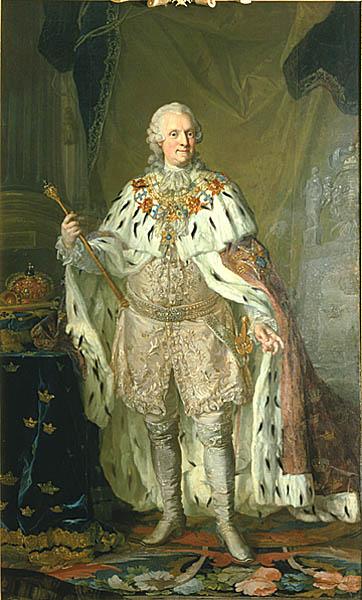Adolph Frederick (Adolph Frederick)

His father was Christian Augustus (1673—1726) duke and a younger prince of Schleswig-Holstein-Gottorp, prince-bishop of Lubeck, and administrator, during the Great Northern War, of the duchies of Holstein-Gottorp for his relative Charles Frederick. His mother was Albertina Frederica of Baden-Durlach.
On his mother’s side, Adolf Frederick descended from king Gustav I of Sweden and from Christina Magdalena, a sister of Charles X of Sweden. From both his parents he was descended from Holstein-Gottorp, a house with a number of medieval Scandinavian royal dynasties among its ancestors. Adolf Frederick was also a 13th-generation descendant of Erik V of Denmark; a 13th-generation descendant of Sophia of Denmark and Valdemar I of Sweden; and an 11th-generation descendant of Euphemia of Sweden, Duchess of Mecklenburg and her husband the duke Albrecht.
From 1727 to 1750 prince Adolf Frederick was prince-bishop of Lübeck (which meant the rulership of a fief around and including Eutin), and administrator of Holstein-Kiel during the minority of his nephew, Duke Charles Peter Ulrich, afterwards Peter III of Russia. In 1743 he was elected heir to the throne of Sweden by the Hat faction in order that they might obtain better conditions at the Peace of Turku from Empress Elizabeth of Russia, who had adopted his nephew as her heir. He succeeded as Adolf Fredrik on 25 March 1751.
During his twenty-year reign Adolf Frederick was little more than a figurehead, the real power being lodged in the hands of the Riksdag of the Estates, often distracted by party strife. Twice he endeavoured to free himself from the tutelage of the estates. The first occasion was in 1755 when, stimulated by his imperious consort Louisa Ulrika of Prussia (sister of Frederick the Great), he tried to regain a portion of the attenuated prerogative, and nearly lost his throne in consequence. On the second occasion, under the guidance of his eldest son, the crown prince Gustav, afterwards Gustav III of Sweden, he succeeded in overthrowing the “Cap” senate, but was unable to make any use of his victory. His mother died a widow in Hamburg on 22 December 1755. She was a descendant of earlier royal dynasties of Sweden, granddaughter of Christina Magdalena of Palatinate, Charles X’s sister.
The king died on 12 February 1771 after having consumed a meal consisting of lobster, caviar, sauerkraut, kippers and champagne, which was topped off with 14 servings of his favourite dessert: semla served in a bowl of hot milk. He is thus remembered by Swedish school children as “the king who ate himself to death.” He was regarded, both during his time and in later times, as dependent on others, a weak ruler and lacking of any talents. But he was allegedly also a good husband, a caring father and a gentle master to his servants. His favourite pastime was to make snuffboxes, which he allegedly spent a great deal of time doing. His personal hospitality and friendliness were witnessed by many who deeply mourned him at his death. His portrait is included with the 16-sheet series of Princely Persons on Horseback by Johann Elias Ridinger.
Born
- May, 14, 1710
- Schleswig-Holstein, Germany
Died
- February, 12, 1771
- Stockholm Palace, Stockholm, Sweden
Cemetery
- Riddarholmskyrkan (Riddarholm Church)
- Stockholms län, Sweden



